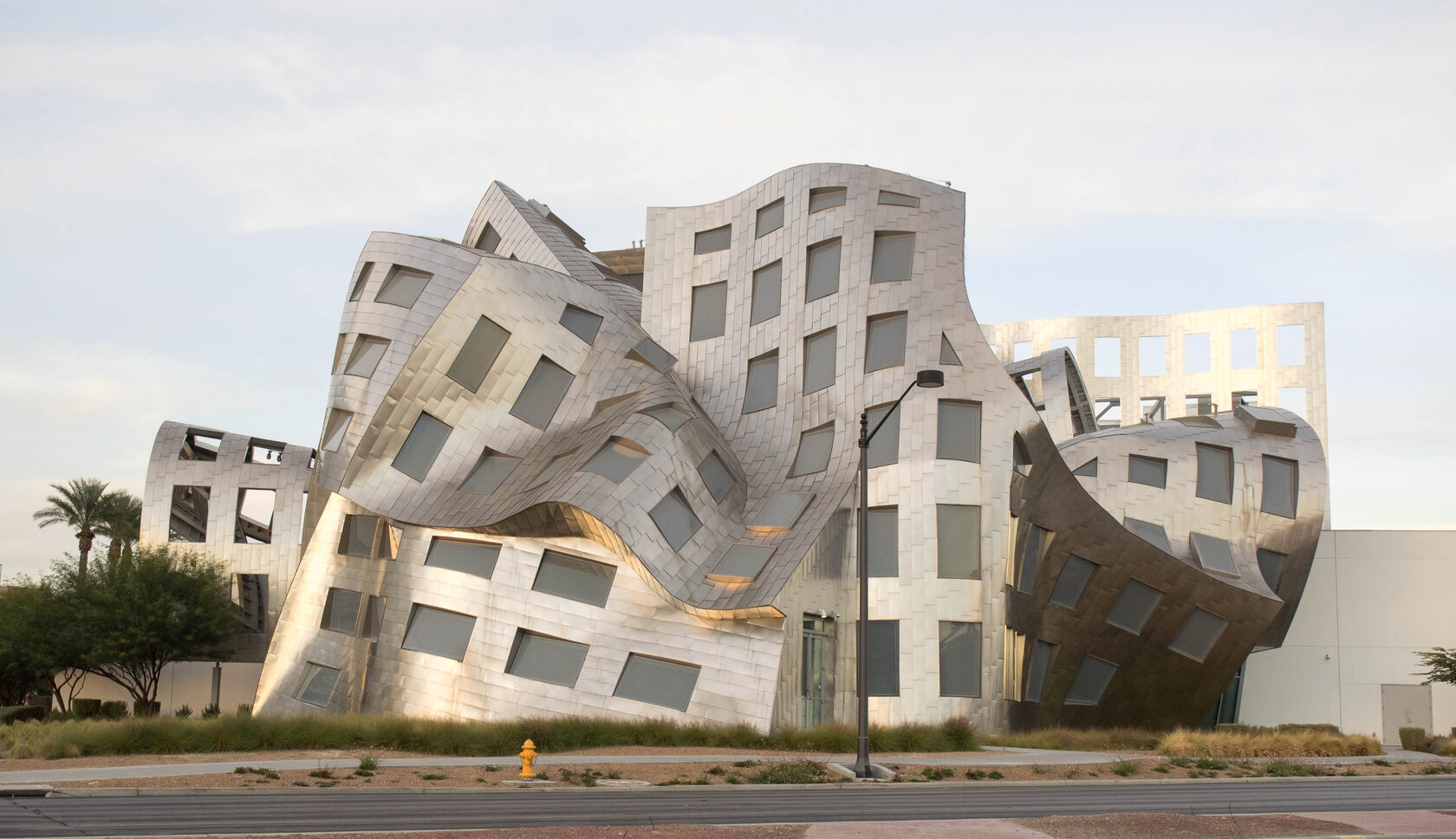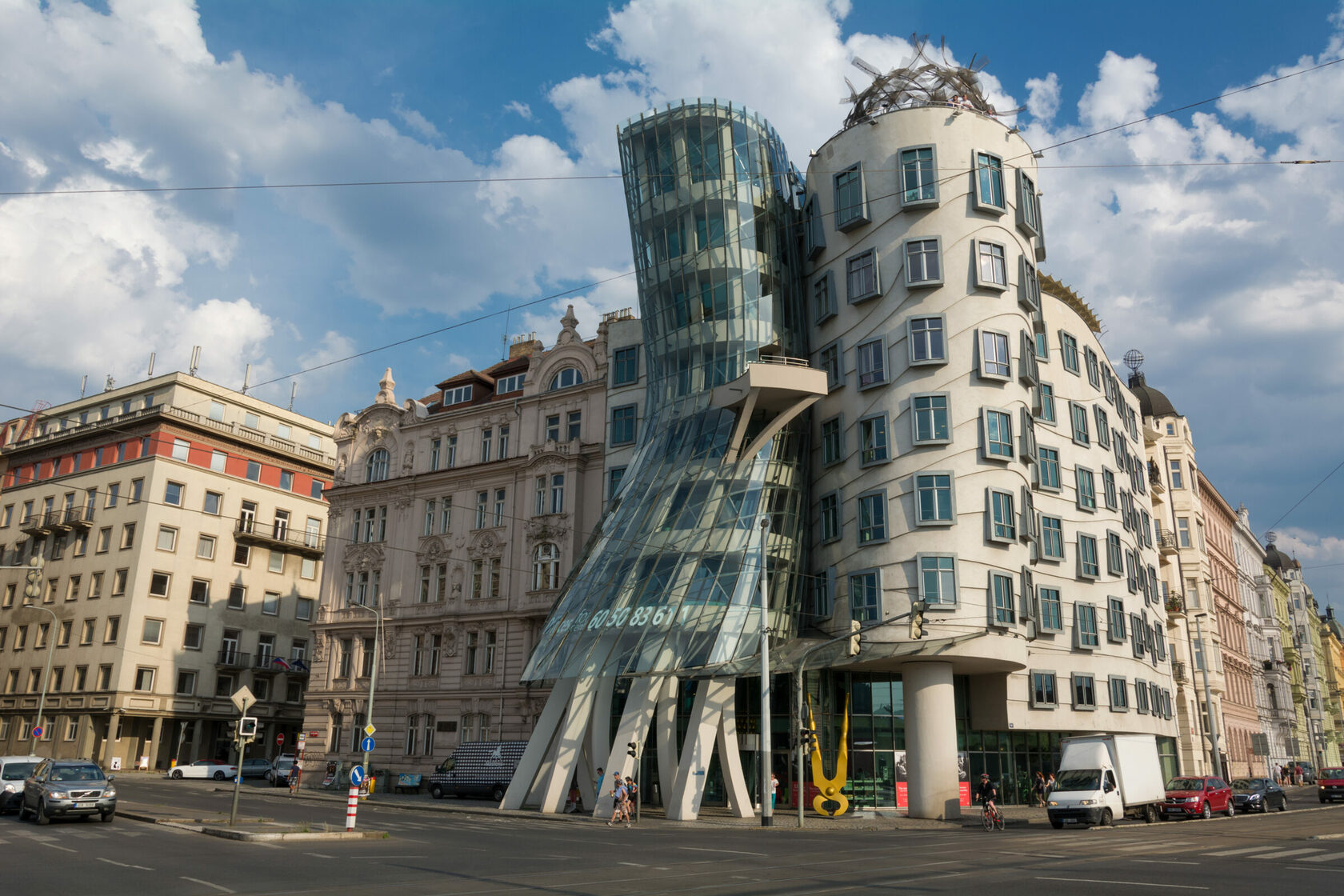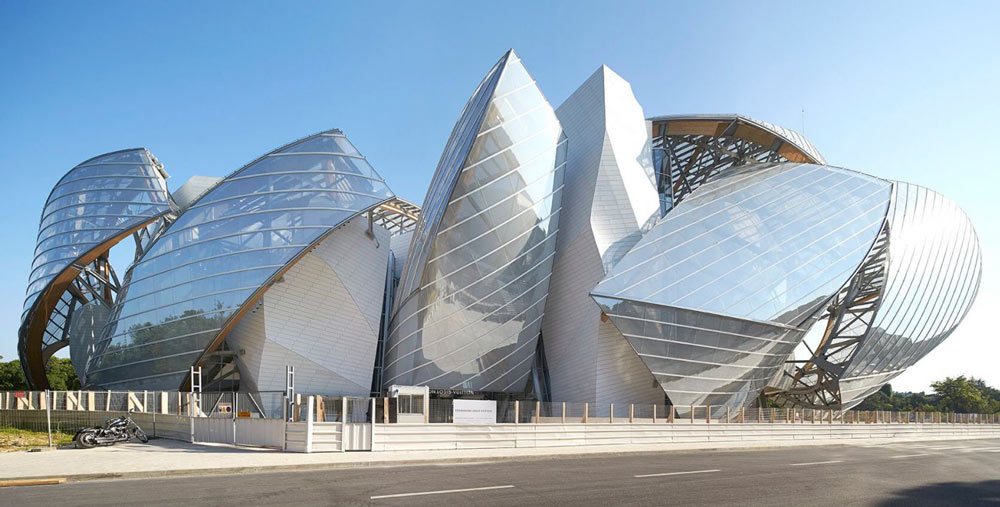Have you ever wondered how anyone could have built something like this, or this, or this? It’s not something we are used to seeing in the history of architecture, right? In today’s episode, we are going to learn about Deconstructivism, an architectural style that forever changed the course of architecture.
Everyone knows that architecture is a conservative discipline. Since the beginning of time, it has demanded order, stability, and logic. However, the 1980s saw a rising architectural sentiment that challenged all of that. It wasn’t a radical new movement but rather a concept of architecture shared and practiced by forward-thinking professionals worldwide, namely Peter Eisenman, Bernard Tschumi, Frank Gehry, Rem Koolhaas, Daniel Libeskind, Coop Himmelb(l)au, and Zaha Hadid among others. They were called Deconstructivists, although many of them rejected the label.

Their up-and-coming, emerging style came to the world’s attention with the 1982 Parc de la Villette design competition in Paris, and the MoMA’s 1988 Deconstructivist Architecture exhibition in New York, organized by Philip Johnson and Mark Wigley. The announcement of the exhibition explained it perfectly:
'Deconstructivists deliberately replaced harmony with discord, unity with fracturing, and clarity with mystery.'
Deconstructivism developed alongside yet apart from postmodernism, which was a movement that emerged in the 1960s as a reaction against the formality of modernism. While both approaches shared a combative, confrontational attitude toward the order, purity, and rationality found in modernism, deconstructivist architects instead rejected the architectural history that postmodernists wholeheartedly and happily embraced.
Deconstructivism sprung from the philosophical theories of “deconstruction” from French philosopher Jacques Derrida, who suggested a radical rethinking of tradition. Deconstructivist architects attempted to translate his ideas and principles by dramatically altering or blatantly rejecting age-old architectural forms and spaces. They called into question the shapes and structures of buildings in favor of design that creates a sense of movement while provoking strong emotions.

These attempts have taken shape in structures characterized by paradoxes, fragmentation, distortion, rejection of symmetry, linearity, continuity, and a radical break of the form-function relationship. Some architects, like the legendary Frank Gehry, focused on deconstructing dual concepts such as function and structure, beauty and ugliness, and interior and exterior.
So, what do Deconstructivism creations look like? The finished buildings appear unstable, confusing, while lacking any visual logic with conflicting abstract forms. They shock the eye with risky, perplexing forms that challenge the visitor. Yet, despite this confounding first impression, the buildings still have consistency. They serve a purpose and possess unconventional beauty in their wild flaws and chaos. This makes the stay in their space an experience worth remembering.
Almost all Deconstructivist buildings have distinctive architectural elements called “Follies” or “Eyecatchers.” In fact, buildings are not accepted as Deconstructivist architecture without these key features. They are parts of a structure primarily found in the exterior and constructed not only for decoration but also to help visitors gain a sense of direction and navigate through sometimes-perplexing spaces.

Besides deconstruction philosophy, architects also found inspiration in other art movements, particularly Russian Constructivism, Futurism, Analytical Cubism, Expressionism, Abstract Expressionism, and Post-Modernism, which all showed tendencies toward the radical treatment of form and perspectives.
The advancements in technology and architectural software programs allowed deconstructivist architects to unleash their creativity and communicate their unorthodox message through unconventional buildings. Some have criticized the movement as “inhuman” and elitist. Despite that, the style gained institutional support and social acceptance over time, and it seems that it will not go out of fashion any time soon. Deconstructivism is still very much alive, moving architects around the world to invent and dream up the buildings of tomorrow. It may well be fashion, but one thing is for sure: deconstructivist architects have changed the course of architecture forever.
How do you find this style? How does it make you feel? Let us know in the comments and don’t forget to subscribe to us on YouTube and Instagram for your regular dose of culture from Curious Muse.
